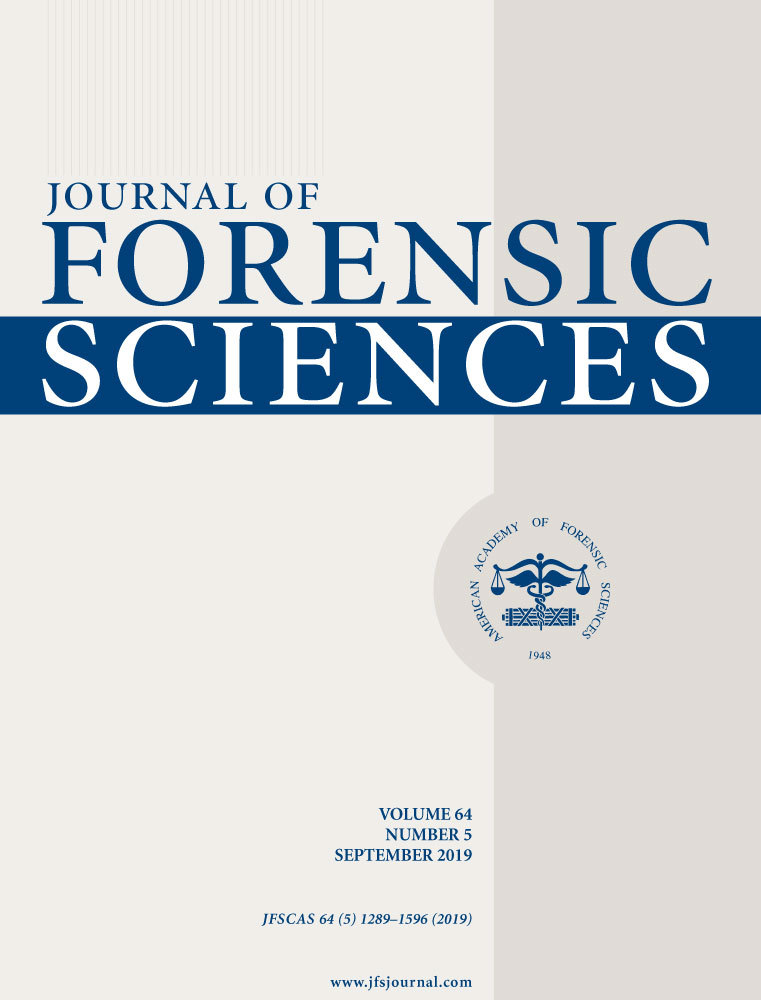The Evidentiary Significance of Automotive Paint from the Northeast: A Study of Red Paint†
Abstract
This population study was conducted to assess the frequency of physical, microscopical, and chemical properties of automotive paint chips. Population studies of trace evidence provide valuable analytical data for criminalists to assess evidentiary significance. Two-hundred automotive paint chips were collected from auto body shops from the Northeastern United States. All samples were analyzed using stereomicroscopy, brightfield, and polarized light microscopy. Red paints were targeted for further analysis using a sequence of modern instrumental techniques commonly used by forensic paint examiners: Fourier-transform infrared (FT-IR), Raman, and ultraviolet–visible (UV–Vis) microspectroscopy. The discrimination potential of each analytical method was evaluated by inter-comparing the paint samples. Results demonstrated that macroscopic and microscopic properties were able to differentiate 99.995% of the population (one undifferentiated pair out of 19,900). When combined with either FT-IR or UV–Vis microspectroscopy, all paints were differentiated. The results of this research lead to the conclusion that one would not expect to encounter two indistinguishable paint chips originating from different sources during the investigation of a single event.




